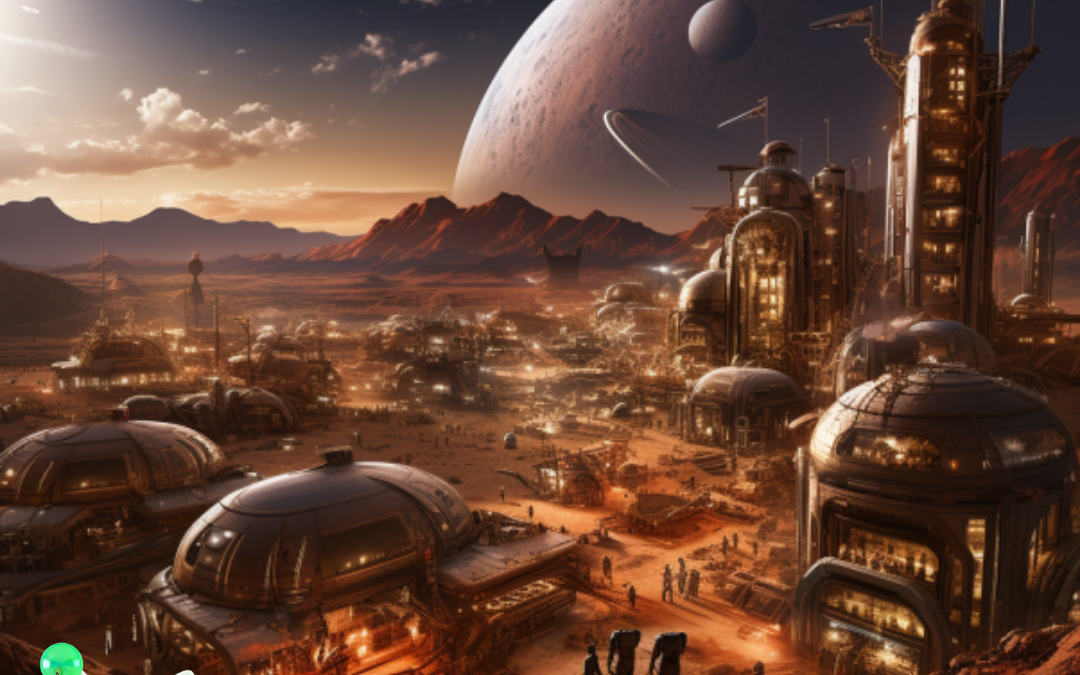In the grand narrative of human progress, the development and utilization of nuclear energy stand as a pivotal chapter, especially in the context of space exploration and the dream of becoming an intergalactic species while playing a pivotal role in the preservation of humanity.
Nuclear energy, known primarily for its role in electricity generation on Earth, has emerged as a crucial technology in space travel. The efficiency, longevity, and power output of nuclear reactors make them ideal for long-duration space missions, particularly to destinations like Mars, where traditional chemical rockets fall short.
The Mars Initiative: A Leap into the Future
The journey to Mars, our closest planetary neighbor that presents conditions amenable to human colonization, has been the subject of scientific and exploratory efforts for decades. Unlike the Moon, a trip to Mars poses significant challenges due to its distance, requiring propulsion systems that can operate over extended periods and provide enough thrust to cover vast interplanetary distances.
This is where nuclear energy comes into play. Nuclear thermal rockets, using a reactor to heat a propellant like hydrogen to high temperatures before expelling it to create thrust, offer a more efficient means of space travel compared to conventional chemical rockets. They promise shorter travel times to Mars, a critical factor in reducing the risks associated with long-duration spaceflights, such as exposure to cosmic radiation and the psychological impacts of prolonged isolation.
Towards an Intergalactic Future
The successful implementation of nuclear-powered space travel could mark the beginning of an intergalactic era for humanity. By reducing travel times and increasing payload capacities, nuclear energy could make missions to farther planets and even other star systems feasible, a prospect that was once relegated to the realm of science fiction.
The potential for nuclear energy in space extends beyond propulsion. Small modular nuclear reactors could provide a reliable power source for bases on Mars, enabling sustainable human presence and exploration on the Red Planet. This technology could support life support systems, habitat heating, and scientific experiments, laying the groundwork for a permanent human settlement.
The Role of Nuclear Energy in the Preservation of Humanity
The role of nuclear energy in the preservation of humanity extends beyond its application in space exploration. On Earth, as we grapple with the twin challenges of climate change and a growing global energy demand, nuclear power presents a viable solution as a low-carbon energy source. Unlike fossil fuels, nuclear reactors emit no greenhouse gases during operation, making them an essential component in the transition to a sustainable energy future. In the broader context of human survival and environmental stewardship, nuclear energy could play a pivotal role in reducing our carbon footprint and mitigating the impacts of climate change.
Moreover, the advancements in nuclear technology, including the development of safer, more efficient reactors and the potential for nuclear fusion, offer a glimpse into a future where energy is abundant and environmentally benign. This progress is crucial not only for maintaining our civilization’s energy needs but also for driving technological and industrial advancements necessary for deep space exploration and potential colonization efforts.
In this sense, nuclear energy is not just a tool for reaching distant planets but also a means of ensuring that life on Earth can thrive. By providing a stable, scalable, and clean energy source, it supports global efforts in preserving our planet’s ecosystems, combating climate change, and securing a sustainable future for generations to come. The dual role of nuclear energy – as a catalyst for space exploration and a cornerstone for sustainable living on Earth – underscores its significance in the ongoing narrative of human progress and survival.


